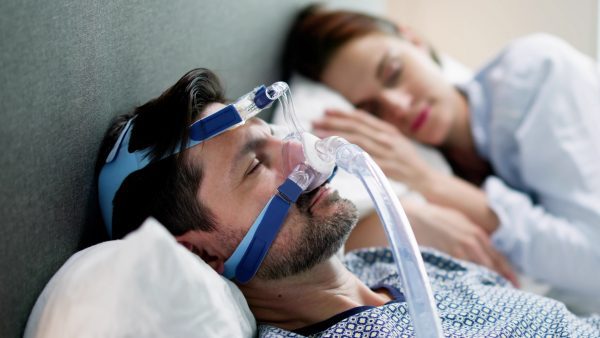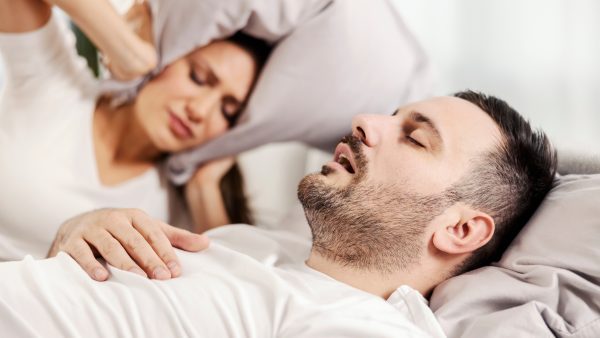Looking for Expert-Level VA Claim Answers?📱Call Us Now! 737-295-2226
Do you qualify for a Central Sleep Apnea VA rating?
In this post, we explain how to qualify for a central sleep apnea VA rating, including how the VA rates sleep apnea and how to prove service connection for your central sleep apnea. Let’s dive in.
Table of Contents
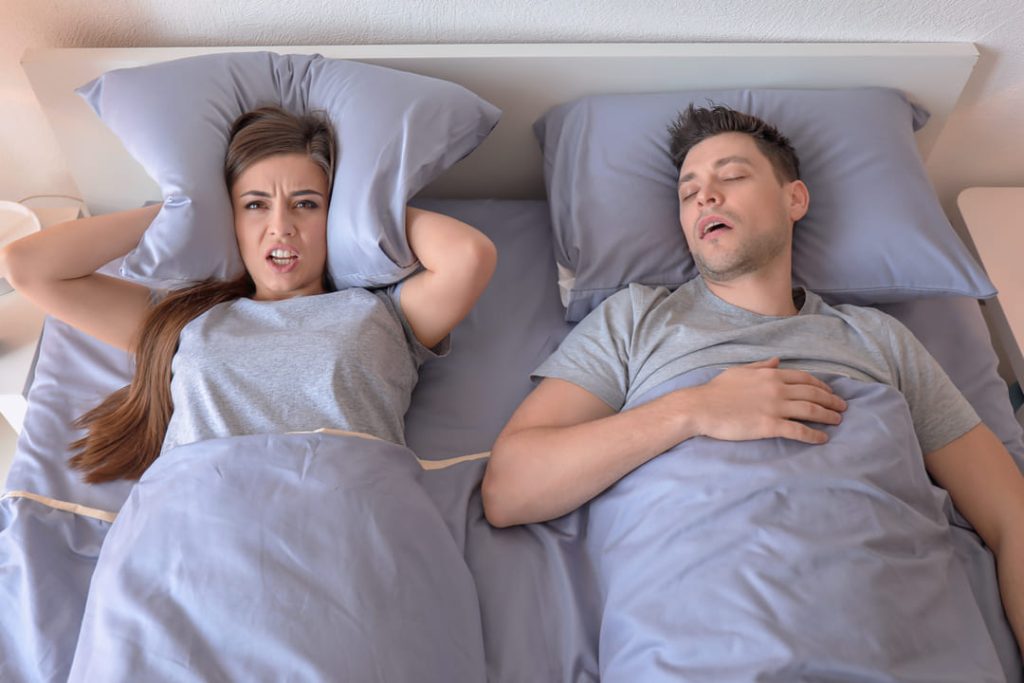
You DESERVE a HIGHER VA rating.
Take advantage of a VA Claim Discovery Call with an experienced Team Member. Learn what you’ve been missing so you can FINALLY get the disability rating and compensation you’ve earned for your service.
Sleep Apnea in Veterans
Do you feel excessively tired during the day, even after a full night’s sleep? Wake up irritable or with an aching head? Have trouble focusing? You may have sleep apnea.
With sleep apnea, your breathing can stop and start all night long, leaving you feeling like you’ve barely slept at all.
Sleep apnea is a common diagnosis, affecting 5% to 10% of the general population. Veterans are at an even higher risk, with 20% suffering from the disorder.
Getting a Central Sleep Apnea Diagnosis
Diagnosing sleep apnea is the first and most important step—both for getting the VA benefits you are legally entitled to and getting the treatment that you need to improve your quality of life.
Diagnosis starts with a sleep study. The study will monitor your sleep patterns, breathing, oxygen levels, brain activity, and heart rate. Not only will the sleep study reveal whether or not you have sleep apnea, it will also help your doctor know which type of sleep apnea you are suffering from: central sleep apnea, obstructive sleep apnea, or mixed (a combination of both). Read more about setting up your sleep study here.
If you are diagnosed with central sleep apnea, you’ll be in the minority. This condition is less common than obstructive sleep apnea but no less dangerous. With central sleep apnea, the brain doesn’t activate the muscles that are responsible for breathing.
This is different from obstructive sleep apnea, which occurs when the muscles in the back of your throat get so relaxed when you are sleeping that they block air from flowing in and out normally. So central sleep apnea is a brain signal problem; obstructive sleep apnea is a muscle problem.
How the VA Rates Sleep Apnea
The VA rating for central sleep apnea uses diagnostic code 6847. VA ratings for sleep apnea can be 0%, 30%, 50%, or 100%, depending on the severity of your condition.
If the condition continues over a long period of time and causes respiratory failure with right heart ventricle failure or with too much carbon dioxide in the bloodstream, or if it requires a Tracheotomy, it is rated 100%.
If it requires the use of breathing machines like a continuous positive airway pressure (CPAP) machine during sleep, it is rated 50%.
If it causes serious sleepiness during the daytime or not feeling rested after sleeping, it is rated 30%.
If it is diagnosed by a sleep test but doesn’t cause any significant symptoms, it is rated 0%.
How Do I Get a Central Sleep Apnea VA Rating?
It’s common for veterans to leave the military without sleep apnea, only to develop it later. It’s also common for sleep apnea to get worse and merit an increased VA rating. Here’s what you’ll need to submit a VA claim for sleep apnea so that you can get the benefits you deserve.
1. Get a diagnosis
An official diagnosis is different from being prescribed treatment for your sleep apnea, such as a CPAP machine. You need a specific diagnosis stating that you have sleep apnea.
Schedule an appointment with your primary care physician. They can order a sleep study. This can be completed in a VA sleep lab or through an at-home test kit. Check out this article for information on scheduling a sleep study with the VA.
If the doctor prescribes a CPAP machine, make sure that they specifically say that it is required for you. This can increase your rating.
2. Consider Getting a Sleep Apnea Nexus Letter
A sleep apnea nexus letter from a medical professional should show that, as least as likely as not, your sleep apnea is tied to your military service—either directly or as a secondary claim to another direct service-connected condition.
Going the secondary condition route often proves more effective and gets you the same benefits. An example of this would be that your nexus letter shows that your sleep apnea developed secondary to your PTSD, depression, heart disease, asthma, etc.
3. Personal Statement
To strengthen your case, write a personal statement that details how your condition developed. If you are connecting it to a direct service-connected condition, share any evidence tying the two conditions together. You should also detail how your sleep apnea downgrades your quality of life. Here’s more information on writing a compelling personal statement. Buddy letters from family and friends supporting your stance can also help your case.
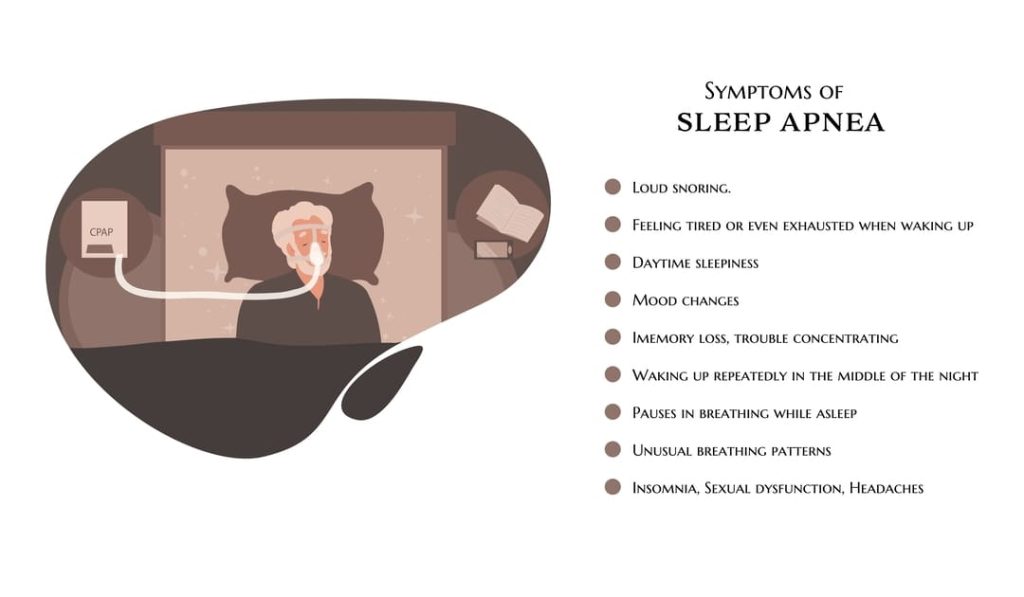
Central Sleep Apnea Symptoms
Snoring, which is very common with obstructive sleep apnea, is less common with central sleep apnea. More common symptoms include:
- Observed episodes of not breathing or abnormal breathing patterns during sleep
- Daytime fatigue
- Frequent nighttime waking
- Waking up with a headache
- Trouble focusing and remembering
- Bad moods
- Decrease in ability to exercise
What Causes Central Sleep Apnea?
There are a number of conditions that affect your brain stem, which links your brain to your spinal cord and affects your breathing. These conditions can cause a “short” between your brain and your breathing muscles.
- Congestive heart failure/stroke. Both of these conditions can affect the brain stem and lead to a type of compromised breathing known as Cheyne-Stokes breathing, which limits airflow during sleep.
- Kidney disease/atrial fibrillation. These are additional health conditions that can affect brain stem function and cause central sleep apnea.
- Drugs. Certain medications, such as morphine, oxycodone, and other opioids, can compromise communication between your brain and breathing muscles.
- Other sleep apnea treatments. Unfortunately, medical treatments can create new health problems in the course of solving others. Such is the case with CPAP machines, which can help with obstructive sleep apnea but create central sleep apnea in the process.
- High altitude. The limited oxygen at high altitudes can throw off your breathing and lead to central sleep apnea.
PTSD and Central Sleep Apnea
There’s a strong link between PTSD and central sleep apnea. One study showed that nearly 70% of Iraq and Afghanistan veterans being evaluated for PTSD had an elevated risk for sleep apnea, and that risk increased by 40% with each clinically significant increase in the severity of PTSD symptoms.
Unfortunately, these two conditions can create a vicious cycle to ratchet up symptoms. For example, central sleep apnea can cause you to lose sleep, and fatigue can exacerbate your PTSD symptoms. Another example is that PTSD can increase your risk for atrial fibrillation and stroke, both of which are risk factors for central sleep apnea.
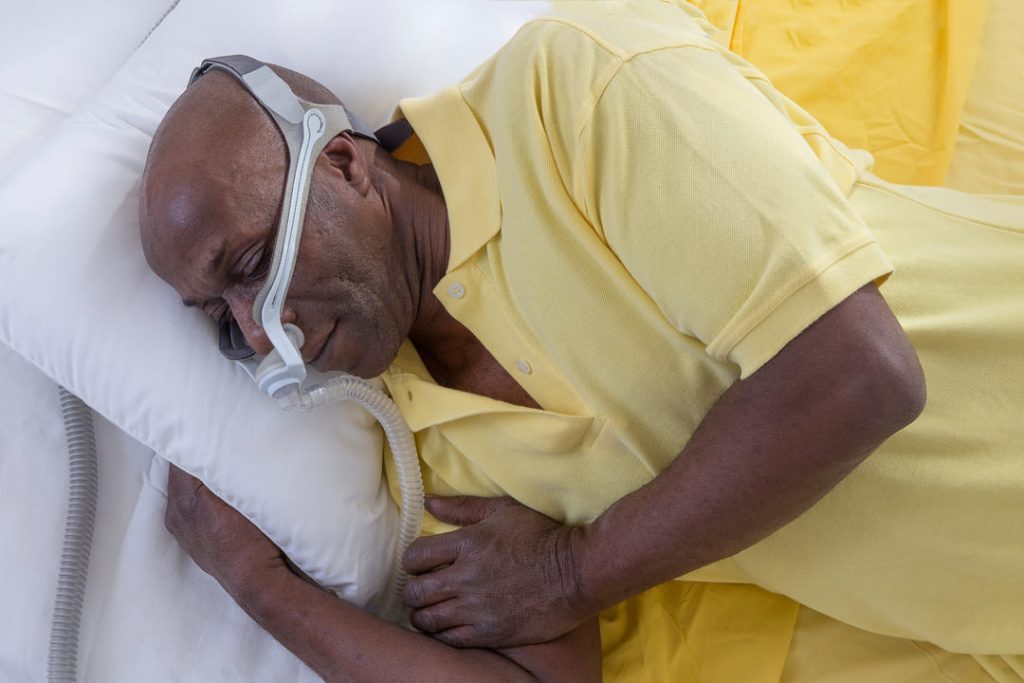
Why You Should Not Delay Treatment for Central Sleep Apnea
If you’re living with central sleep apnea, you already know a lot of the ways it can downgrade your quality of life: falling asleep throughout the day, loss of energy, or waking throughout the night.
The dip in quality of life should be reason enough to get help for your sleep apnea, but there’s also the issue of quantity of life. Living with untreated central sleep apnea means your body is subjected to repeated episodes of low blood oxygen (also known as hypoxia). That’s like an engine trying to run without fuel.
The stress will ultimately take a toll on your heart, worsening existing heart disease and causing new ones. Sleep apnea leads to abnormal heart rhythms and cardiovascular disease. Studies show that it can increase your risk of heart failure by 140%.
Sleep apnea has also been shown to increase your risk for type 2 diabetes and liver problems.
What’s the Best Treatment for Central Sleep Apnea?
Your doctor may recommend that you stop taking medications that are contributing to your central sleep apnea. Maintaining a healthy weight and laying off alcohol can also help your apnea. Your doctor may prescribe A CPAP device (continuous positive airway pressure), which will force a steady stream of air into your nose and mouth so that you maintain airflow, even if your brain isn’t talking to your breathing muscles like it should.
Another treatment is a diaphragm stimulator, a device that can be implanted in the chest. It does what the brain is supposed to be doing and stimulates the nerves to activate breathing. The VA has started implanting diaphragm stimulators to help with moderate to severe central sleep apnea.
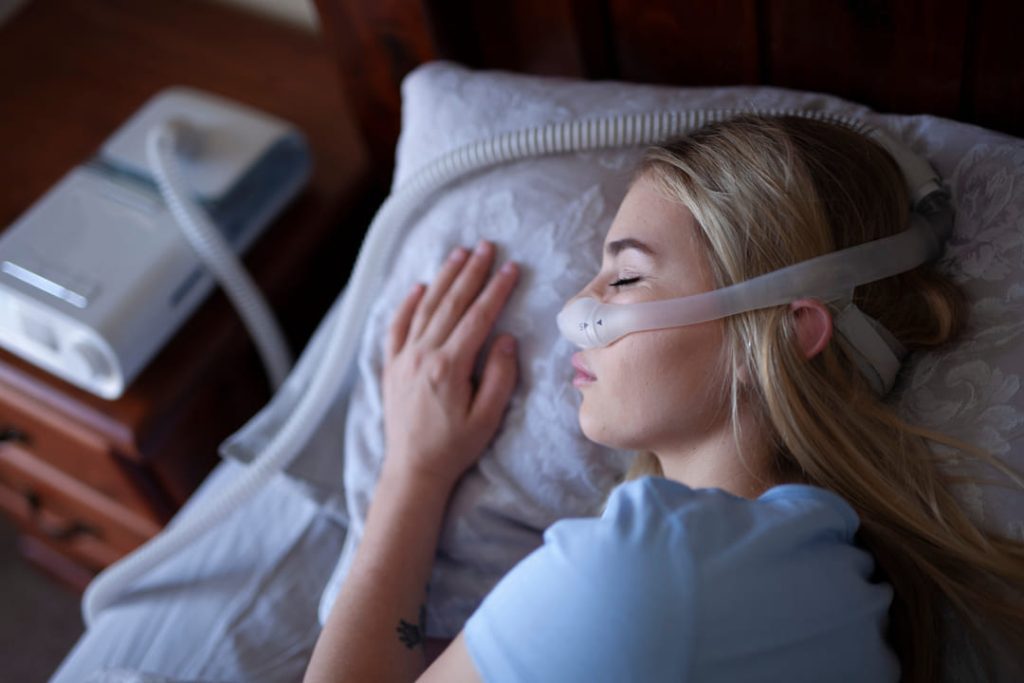
NEED MORE ASSISTANCE?
Most veterans are underrated for their disabilities and, therefore, not getting their due compensation. At VA Claims Insider, we help you understand and take control of the claims process, so you can get the rating and compensation you’re owed by law.
Our process takes the guesswork out of filing a VA disability claim and supports you every step of the way in building a fully-developed claim (FDC)—so you can increase your rating FAST! If you’ve filed your VA disability claim and have been denied or have received a low rating—or you’re unsure how to get started—reach out to us! Take advantage of a FREE VA Claim Discovery Call. Learn what you’ve been missing—so you can FINALLY get the disability rating and compensation YOU DESERVE!

